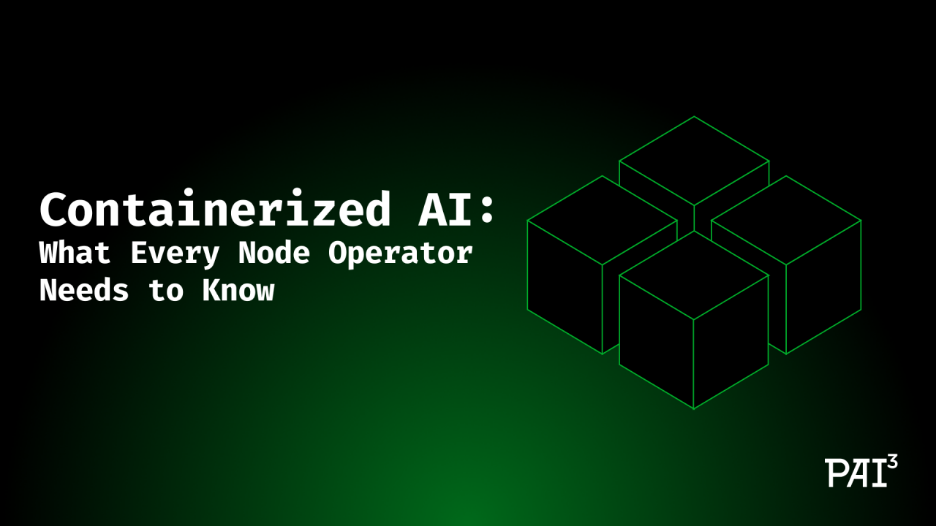
A Beginner’s Guide to AWS EC2 and AWS Lambda: When and Why to Use Them
Confused between EC2 and Lambda? This beginner-friendly guide breaks down their core differences, use cases, pros and cons and helps you choose the right service for your application needs.
Dev Orbit
June 24, 2025
Cloud computing has revolutionized the way we design, build and deploy applications by providing scalable, cost-effective and flexible solutions. Among the vast range of services offered by AWS (Amazon Web Services), EC2 (Elastic Compute Cloud) and Lambda stand out as two essential building blocks for running applications in the cloud.
AWS EC2 provides virtual servers, offering complete control over the underlying infrastructure, making it ideal for traditional applications, databases and systems requiring persistent compute power.
AWS Lambda, on the other hand, represents the “serverless” paradigm, where you focus solely on your code while AWS handles the infrastructure, scaling and maintenance automatically.
This blog will guide you through the core concepts, use cases and key differences between EC2 and Lambda. I designed this to help you understand.
What is AWS EC2?
Amazon Elastic Compute Cloud (Amazon EC2) is one of the core services offered by AWS that allows you to create virtual servers, called “instances,” in the cloud. Think of EC2 as renting a virtual computer where you can run applications, store data and perform tasks, just like you would on a physical server.
Key Features of EC2:
Customization: Choose from a variety of instance types optimized for computing power, memory, or storage.
Scalability: Easily scale your infrastructure up or down based on demand using features like Auto Scaling Groups.
Flexibility: Supports multiple operating systems (Linux, Windows, etc.) and integrates well with other AWS services.
Elastic IPs: Assign static IP addresses to ensure your applications are always reachable.
Purchasing Options:
On-Demand Instances: Pay only for the time your instance is running.
Reserved Instances: Commit to using an instance for a term (1–3 years) at a lower price.
Spot Instances: Bid for unused EC2 capacity at significantly reduced rates.
Why is EC2 important?
It allows you to run traditional applications in the cloud with full control over the environment, making it suitable for applications that require constant uptime, high performance and customized configurations.
What is AWS Lambda?
AWS Lambda is a “serverless” computing service that allows you to run code without worrying about managing servers. All you do is upload your code, define the conditions under which it should run and AWS takes care of the rest — like scaling, infrastructure and monitoring.
Key Features of AWS Lambda:
Serverless: No need to provision or maintain servers.
Event-Driven: Executes code in response to events like file uploads, HTTP requests, or database updates.
Auto-Scaling: Automatically scales up or down based on the number of requests.
Pay-As-You-Go: Charges based on the number of requests and the time your code takes to execute.
Supported Languages: Works with various runtimes, such as Python, Node.js, Java, Go and more.
Why is Lambda important?
It simplifies application development by eliminating server management. It’s particularly useful for tasks that run intermittently, like processing a file uploaded to S3 or handling an API request.
Why Use AWS EC2?
EC2 is ideal when:
You need full control over the server, such as installing specific software, configuring the environment, or running legacy applications.
Applications require constant compute power, like databases, enterprise applications, or scientific simulations.
You need custom networking configurations, such as setting up a Virtual Private Cloud (VPC).
Examples:
Hosting a MySQL database with specific performance tuning.
Running a web server for an e-commerce platform.
Performing large-scale data analysis on a consistent basis.
Why Use AWS Lambda?
Lambda is ideal for:
Workloads that are unpredictable or occur infrequently, as it scales automatically and charges only when code runs.
Event-driven applications where functions are triggered by specific events, like API requests or file uploads.
Developers who want to focus on writing code without worrying about server management.
Examples:
Automatically resizing an image uploaded to S3.
Running backend APIs for a mobile application.
Processing real-time IoT data.
What is Serverless Computing?
Serverless computing is a cloud-computing model where you don’t manage servers. Instead, the cloud provider handles provisioning, scaling and maintaining the servers, allowing developers to focus solely on the code.
Advantages of Serverless:
No Infrastructure Management: No need to worry about servers or operating systems.
Cost-Efficient: Pay only for the actual usage, not for idle time.
Scalable: Automatically adjusts resources to meet demand.
AWS Lambda is a prime example of serverless computing.
Key Differences Between EC2 and Lambda
Feature | EC2 | Lambda |
|---|---|---|
Infrastructure | User-managed servers | Fully managed by AWS |
Billing | Based on uptime and instance type | Based on requests and execution time |
Scaling | Manual or Auto Scaling setup | Automatic and instant scaling |
State | Persistent | Stateless (requires external storage like S3) |
Use Case | Long-running, stable applications | Event-driven, intermittent workloads |
From EC2 to Lambda:
When operational overhead needs to be reduced.
If the workload is event-driven, like processing IoT data or API requests.
To save costs for short-lived tasks.
From Lambda to EC2:
When the workload requires continuous or predictable compute.
If the task exceeds Lambda’s limitations (e.g., a maximum execution time of 15 minutes).
When the application demands persistent states or complex configurations.
How to Configure AWS Lambda?
Create a Function:
Go to the AWS Lambda console and create a new function.
Choose a runtime (e.g., Node.js, Python).Write or Upload Code:
Use the inline editor, upload a ZIP file, or deploy via CI/CD pipelines.Set Environment Variables:
Define key-value pairs for configuration.Attach Permissions:
Assign IAM roles to allow interaction with other AWS services.Test and Monitor:
Use AWS CloudWatch to monitor logs, set alerts and optimize performance.
How to Set Up Lambda with NestJS?
Create a NestJS Project: Use the NestJS CLI to bootstrap a project.
Install Dependencies: Add packages like
aws-serverless-express.Adapt Code: Modify the NestJS app to work as a Lambda handler.
Deploy: Use tools like the Serverless Framework to deploy.
Integrate API Gateway: Connect the Lambda function to handle HTTP requests.
Additional Functionalities in AWS EC2 and Lambda
EC2:
Monitoring: Track instance performance via CloudWatch.
Networking: Set up private or hybrid networks with VPC.
Security: Apply strict access controls with IAM and security groups.
Lambda:
Integrations: Work seamlessly with services like S3, DynamoDB and API Gateway.
Concurrency Control: Limit concurrent executions to manage costs.
Reusable Code: Use Lambda layers for shared libraries.
Conclusion
AWS EC2 and AWS Lambda are both powerful tools, each designed to solve specific types of problems in cloud computing. Understanding their differences, strengths and use cases can help developers and organizations make informed decisions based on their application requirements.
AWS EC2:
EC2 is ideal for workloads that need complete control over the infrastructure, stable and continuous operation, or custom configurations. It’s a versatile solution for hosting traditional applications, databases and other resource-intensive tasks.
AWS Lambda:
Lambda shines in scenarios where you need a serverless, event-driven and cost-efficient solution. It’s perfect for short-lived tasks, scaling on demand and minimizing operational overhead.
Key Takeaways:
Use EC2 for predictable, long-running workloads with stable resource requirements.
Choose Lambda for intermittent tasks, microservices, or automation workflows without the need to manage servers.
Both services integrate seamlessly with AWS’s ecosystem, enabling flexible, scalable and secure cloud applications.
By leveraging the right service based on specific application needs, developers can optimize performance, scalability and costs while focusing on delivering business value. As technology evolves, a combination of EC2, Lambda and other AWS services can be used to build hybrid architectures that maximize efficiency and flexibility.
💬 Found this useful?
🔁 Share with your dev team.

Enjoyed this article?
Subscribe to our newsletter and never miss out on new articles and updates.
More from Dev Orbit

Top AI Tools to Skyrocket Your Team’s Productivity in 2025
As we embrace a new era of technology, the reliance on Artificial Intelligence (AI) is becoming paramount for teams aiming for high productivity. This blog will dive into the top-tier AI tools anticipated for 2025, empowering your team to automate mundane tasks, streamline workflows, and unleash their creativity. Read on to discover how these innovations can revolutionize your workplace and maximize efficiency.

Containerized AI: What Every Node Operator Needs to Know
In the rapidly evolving landscape of artificial intelligence, containerization has emerged as a crucial methodology for deploying AI models efficiently. For node operators, understanding the interplay between containers and AI systems can unlock substantial benefits in scalability and resource management. In this guide, we'll delve into what every node operator needs to be aware of when integrating containerized AI into their operations, from foundational concepts to practical considerations.

How to Write an Essay Using PerfectEssayWriter.ai
Have you ever stared at a blank page, overwhelmed by the thought of writing an essay? You're not alone. Many students and professionals feel the anxiety that accompanies essay writing. However, with the advancements in AI technology, tools like PerfectEssayWriter.ai can transform your writing experience. This article delves into how you can leverage this tool to produce high-quality essays efficiently, streamline your writing process, and boost your confidence. Whether you're a student, a professional, or simply someone looking to improve your writing skills, this guide has you covered.

📌Self-Hosting Secrets: How Devs Are Cutting Costs and Gaining Control
Self-hosting is no longer just for the tech-savvy elite. In this deep-dive 2025 tutorial, we break down how and why to take back control of your infrastructure—from cost, to security, to long-term scalability.

10 Powerful Tips for Efficient Database Management: SQL and NoSQL Integration in Node.js
Streamline your Node.js backend by mastering the integration of SQL and NoSQL databases—these 10 practical tips will help you write cleaner, faster and more scalable data operations.

Best Cloud Hosting for Python Developers in 2025 (AWS vs GCP vs DigitalOcean)
Finding the Right Python Cloud Hosting in 2025 — Without the Headaches Choosing cloud hosting as a Python developer in 2025 is no longer just about uptime or bandwidth. It’s about developer experience, cost efficiency and scaling with minimal friction. In this guide, we’ll break down the top options — AWS, GCP and DigitalOcean — and help you make an informed choice for your projects.
Releted Blogs

🚀 Mastering Python Automation in 2025: Deep Insights, Real-World Use Cases & Secure Best Practices
Streamline your workflows, eliminate manual overhead and secure your automation pipelines with Python — the most powerful tool in your 2025 toolkit.

How to Build an App Like SpicyChat AI: A Complete Video Chat Platform Guide
Are you intrigued by the concept of creating your own video chat platform like SpicyChat AI? In this comprehensive guide, we will walk you through the essentials of building a robust app that not only facilitates seamless video communication but also leverages cutting-edge technology such as artificial intelligence. By the end of this post, you'll have a clear roadmap to make your video chat application a reality, incorporating intriguing features that enhance user experience.

Unlocking WASI: The Future of Serverless with WebAssembly
Discover how WASI is transforming serverless computing with secure, portable WebAssembly runtimes for the cloud era.

Spotify Wrapped Is Everything Wrong With The Music Industry
Every year, millions of Spotify users eagerly anticipate their Spotify Wrapped, revealing their most-listened-to songs, artists and genres. While this personalized year-in-review feature garners excitement, it also highlights critical flaws in the contemporary music industry. In this article, we explore how Spotify Wrapped serves as a microcosm of larger issues affecting artists, listeners and the industry's overall ecosystem.
Have a story to tell?
Join our community of writers and share your insights with the world.
Start Writing